Question-Thank you for answering so quickly. I should have been a little clearer on what i said earlier. He did not eat the baggies, he ate only the ground meat "in" the baggies. So what should i do? ------------------------
Followup To
Question -
I left some raw ground meat on my kitchen counter to defrost and i left to go to school. I didn't think my dog would eat it. When i came home about an hour and a half later i noticed the two baggies that had raw meat in them were empty! He ate both of the baggies which probably equalled the amount of 3-4 pounds. What should I do? He is 90lb labrador retriver if that makes any difference.
Answer -
The baggies are much more of a hazard than the meat. Dogs have a short digestive tract, and usually expel bacteria, etc. that might kill us, before it hurts them. Still, what we carry home from the supermarket isn't to be confused with wolves' natural diet. Any unusually thing in the diet can lead to vomiting or diarrhea.
The baggies are not digestible, and could twist into a wad and block the digestive tract. Watch for loss of appetite or constipation. For most Labs, loss of appetite is a real sign of problems. If you see either, call the vet.
Some people actually try to create a more natural diet by feeding their dog raw meat. The AVMA condemns that. Here is a link on its dangers, http://www.secondchanceranch.org/rawmeat.html
This is a link to a photo that many Lab owners would enjoy, http://www.photolocker.net/images/Labman/zekeandtheproplan.jpg
AnswerBe more careful about leaving meat out.
The chances of the hamburger hurting him are low. Keep an eye on him just in case. Some people deliberately feed it to their dogs. It really isn't a good idea, but seldom hurts the dogs much. The best diet for a dog is a dry kibble tested using AAFCO methods and little else. In times past, dog chows were not as good as now, and people are still solving 50's problems with all sorts of supplements likely to cause more harm than good. The biggest problem is over feeding, The typical Lab acts like it is starved unless it is allowed to eat its way to life shortening obesity.
Your dog definitely should be narrower at the waist than the hips and chest.
You should be able to easily feel the ribs, but not see them. Each dog is
different. Standard recommendations are a good place to start, but each dog
must have its food adjusted to its individual needs. See
http://www.purina.com/dogs/nutrition.asp?article=292.
A Lab that should weigh 90 pounds is huge, hard to keep things out of reach. A mousetrap is very effective in making many dogs leave something alone. Most
dogs will stay away from anywhere they were surprised by a snap. The best
part is that it is not you that is correcting the dog. It works whether you
are around or not. The mousetrap is very patient and is always on task as
long as you reset it.
Better than mousetraps when you aren't around is the crate. Other dogs may
not be as bad as the young Labs I am plagued with. Still your house and dog
will be much safer with the dog in a crate when you are away. The dog may be
happier in its den than loose in the house. It relaxes, it feels safe in its
den. It rests, the body slows down reducing the need for water and relieving
its self. Dogs that have been crated all along do very well. Many of them
will rest in their crates even when the door is open. I think the plastic
ones give the dog more of a safe, enclosed den feeling. They are harder for
dogs to open too. Metal ones can be put in a corner or covered with
something the dog can't pull in and chew. Select
a crate just big enough for the full grown dog to stretch out in.
Leave it some toys. Perhaps a Kong filled with peanut butter. Don't leave
anything in the crate the dog might chew up. It will do fine without even any
bedding. You will come home to a safe dog and a house you can enjoy.

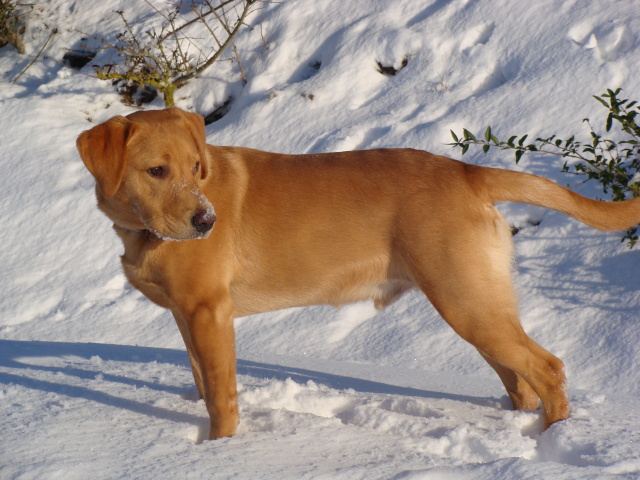 Fox Red/Yellow Lab size query
Question
Hi,
I have a 6 1/2 Fox Red/Yellow lab (Pedig
Fox Red/Yellow Lab size query
Question
Hi,
I have a 6 1/2 Fox Red/Yellow lab (Pedig
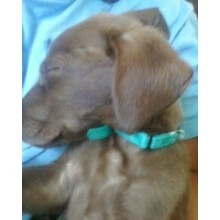 11 week old chocolate lab
Question
11 week old lab
We recently got a chocolate la
11 week old chocolate lab
Question
11 week old lab
We recently got a chocolate la
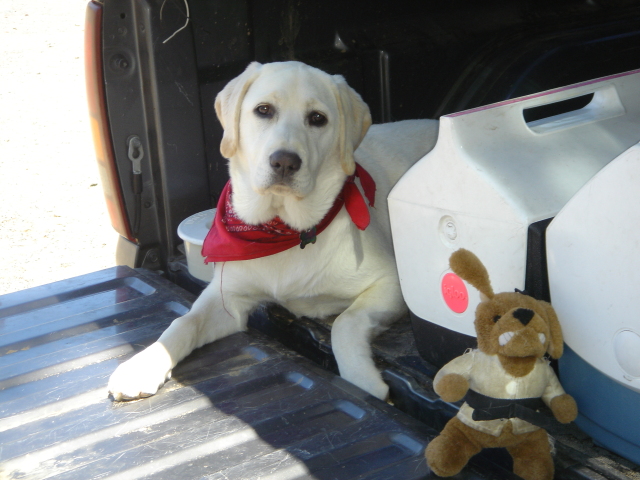 Diet
Question
Lucy and her toy
My yellow lab is about 1 year
Diet
Question
Lucy and her toy
My yellow lab is about 1 year
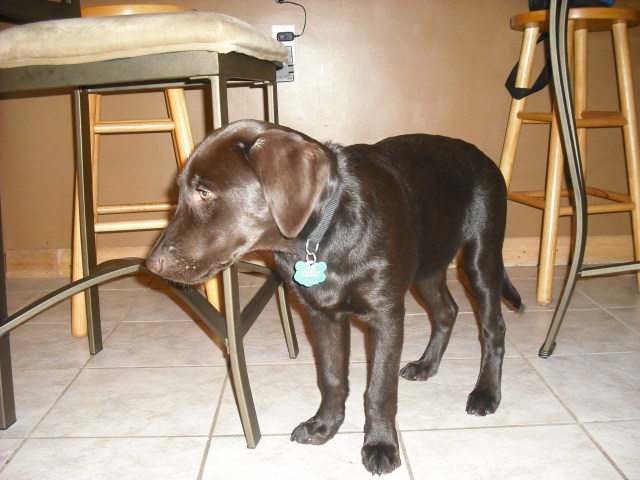 is my lab too small
Question
Reese
I have a 19 week old Male chocolate lab.
is my lab too small
Question
Reese
I have a 19 week old Male chocolate lab.
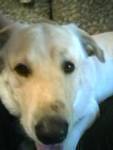 sniffing female owner
Question
Jack
Hello, thank you so much for taking the t
sniffing female owner
Question
Jack
Hello, thank you so much for taking the t